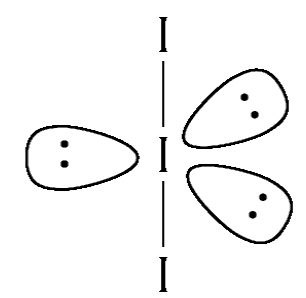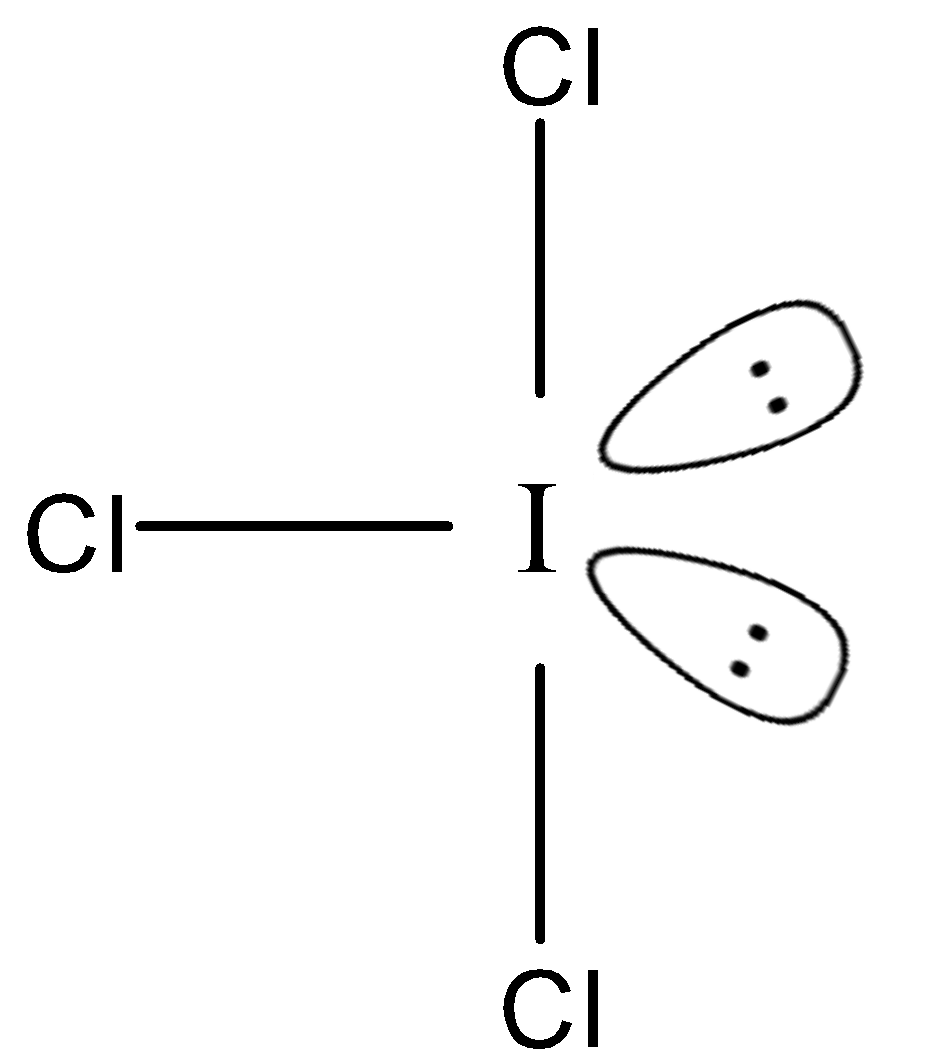
Which of the following have planar structure?
A.
B.
C.
D.
Answer
478.8k+ views
Hint: The planar structure of a compound depends on the plane on which the bonds of the compound are present. If all the bonds should be present in one plane only. It does not depend on the presence of lone pair of electrons which may be present in the compound
Complete step by step answer:
A compound is said to be planar if all the bonds of the compounds lie in one plane. It depends on the hybridisation of the compound. That is if the compound has the
If we consider the first compound mentioned in the options that is,

Therefore, we can see that the orbitals that contain fully filled orbitals can be considered as lone pairs. Since three orbitals are fully filled the central iodine will have three lone pairs.
Now we have two more iodine ions bonded to the central atom therefore, in order to prevent maximum repulsion the geometry of the compound will be trigonal bipyramidal. This is shown below:

Therefore, we can see that the lone pair of electrons use the equatorial plane and the axial plane is occupied by the bond pairs. Therefore, the bond pairs are present in the same plane we can say
The next option has iodine at the centre as well. Here the three chlorine atoms will combine with iodine. The iodine will have three bond pairs and two lone pairs and will therefore, have

Therefore, the chlorine atoms occupy two different planes. Therefore, it will not be planar.
Option c consists of
Therefore, we can conclude by saying that the molecule that is planar among these is option A that is
So, the correct answer is Option A.
Note: Lone pairs have no effect when we consider the plane of the molecule. That is, a molecule is said to be planar if all the bond pairs are present in the same plane.
A lone pair is formed when an orbital of the central atom is completely filled.
Complete step by step answer:
A compound is said to be planar if all the bonds of the compounds lie in one plane. It depends on the hybridisation of the compound. That is if the compound has the
If we consider the first compound mentioned in the options that is,

Therefore, we can see that the orbitals that contain fully filled orbitals can be considered as lone pairs. Since three orbitals are fully filled the central iodine will have three lone pairs.
Now we have two more iodine ions bonded to the central atom therefore, in order to prevent maximum repulsion the geometry of the compound will be trigonal bipyramidal. This is shown below:

Therefore, we can see that the lone pair of electrons use the equatorial plane and the axial plane is occupied by the bond pairs. Therefore, the bond pairs are present in the same plane we can say
The next option has iodine at the centre as well. Here the three chlorine atoms will combine with iodine. The iodine will have three bond pairs and two lone pairs and will therefore, have

Therefore, the chlorine atoms occupy two different planes. Therefore, it will not be planar.
Option c consists of
Therefore, we can conclude by saying that the molecule that is planar among these is option A that is
So, the correct answer is Option A.
Note: Lone pairs have no effect when we consider the plane of the molecule. That is, a molecule is said to be planar if all the bond pairs are present in the same plane.
A lone pair is formed when an orbital of the central atom is completely filled.
Latest Vedantu courses for you
Grade 11 Science PCM | CBSE | SCHOOL | English
CBSE (2025-26)
School Full course for CBSE students
₹41,848 per year
Recently Updated Pages
Master Class 11 Economics: Engaging Questions & Answers for Success

Master Class 11 Business Studies: Engaging Questions & Answers for Success

Master Class 11 Accountancy: Engaging Questions & Answers for Success

Master Class 11 English: Engaging Questions & Answers for Success

Master Class 11 Computer Science: Engaging Questions & Answers for Success

Master Class 11 Maths: Engaging Questions & Answers for Success

Trending doubts
State and prove Bernoullis theorem class 11 physics CBSE

1 ton equals to A 100 kg B 1000 kg C 10 kg D 10000 class 11 physics CBSE

State the laws of reflection of light

One Metric ton is equal to kg A 10000 B 1000 C 100 class 11 physics CBSE

Difference Between Prokaryotic Cells and Eukaryotic Cells

1 Quintal is equal to a 110 kg b 10 kg c 100kg d 1000 class 11 physics CBSE




